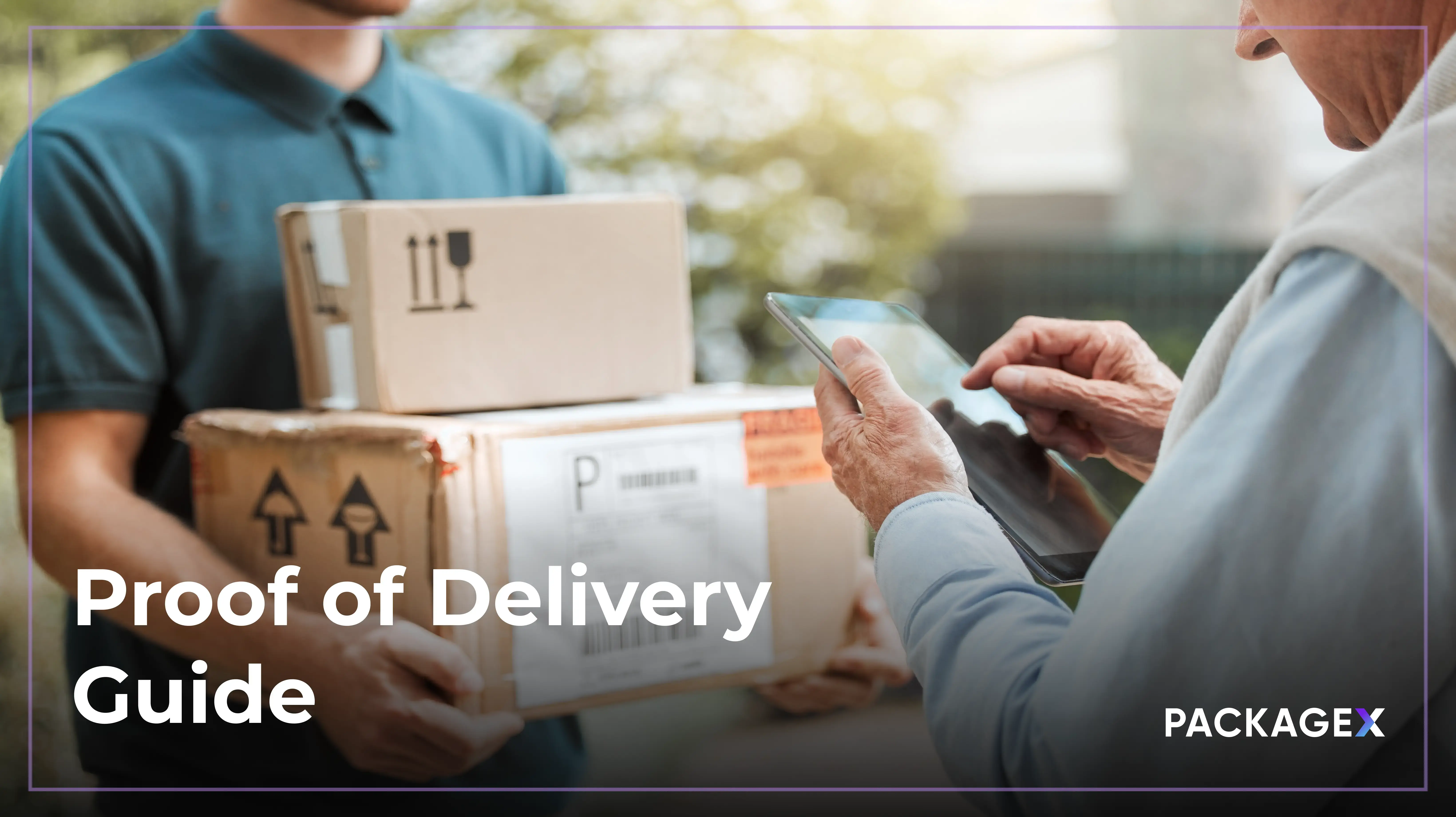Warehouse automation streamlines operations by enhancing efficiency and minimizing human error. It uses technologies like automated material handling and data-driven systems to make processes faster and more accurate. As a result, businesses cut labor costs, boost productivity, and improve how materials move through the supply chain.
According to a latest market report, the warehouse automation market is projected to hit $55 billion by 2030, growing steadily at a 15% compound annual growth rate.
AI and automation have now become a necessity. They help overcome everyday challenges and drive long-term growth. With modern solutions, companies can accomplish more with fewer resources and build resilience into their operations. In 2025 and beyond, warehouse automation is essential for staying ahead.
What Is Warehouse Automation?
Warehouse automation refers to the use of technology to replace manual, labor-intensive processes in warehouse operations. It streamlines tasks like receiving, storing, picking, packing, and shipping through automated systems.
This will improve accuracy, safety, and productivity. It also helps lower labor costs and supports long-term scalability. Businesses that invest in automation solutions gain faster order fulfillment and better inventory control.
Components of Warehouse Automation
Warehouse automation combines equipment and software to improve speed, accuracy, and cost-efficiency. Below are the core components that power automation technology.
- Autonomous Equipment
This includes robots, AGVs, and conveyors, warehouse automation technologies that move materials across zones with minimal human input. - Warehouse Management Systems (WMS)
A key form of warehouse automation software is WMS, which helps track inventory, manage stock levels, and streamline order fulfillment with real-time visibility. - Goods-to-Person (GTP) Systems
These systems bring products directly to pickers using robotics, improving speed and reducing walking time in high-volume warehouses. - Inventory and Order Management Tools
These automation tools sort, count, and pack items. In order to minimize errors and speed up inventory management. - Data Capture & Analytics Systems
Barcode scanners, IoT devices, and sensors enable real-time inventory tracking and predictive insights, strengthening decision-making and operational planning.
Types of Warehouse Automation
Modern warehouse automation systems use both physical and digital tools to improve accuracy, reduce labor, and boost speed. Below are the most common automation tools found in today’s high-performance facilities:
Automated Storage (AS) and Retrieval Systems (RS)
AS/RS solutions use cranes, shuttles, or lifts to automatically store and retrieve items. These systems optimize space and reduce human error, especially in high-density or high-volume warehouses.
Automated Guided Vehicles (AGVs)
AGVs follow predefined paths to move goods across the warehouse floor. These machines are ideal for repetitive transport tasks and help reduce manual handling in hazardous or high-traffic areas.
Autonomous Mobile Robots (AMRs)
Unlike AGVs, AMRs navigate freely using sensors and AI. They adapt in real-time to warehouse layouts and avoid obstacles. AMRs are scalable and work well alongside human staff in dynamic environments.
Conveyors and Sorting Systems
These systems transport, route, and sort packages through fixed pathways. They are often used in large fulfillment centers to speed up order processing and reduce manual touchpoints.
Pick-to-Light Systems
This system uses LED lights on racks or shelves to guide workers to the correct item location. It replaces paper-based picking and helps in warehouse efficiency.
Put-to-Light Systems
These systems use lights to show workers where to place items after picking. They’re ideal for order consolidation and are often used in eCommerce fulfillment or kitting operations.
Key Benefits of Warehouse Automation
Warehouse automation tools and software deliver clear operational gains. Here’s how they improve your workflows, reduce costs, and boost performance:
Increased Efficiency
Automated systems speed up warehouse operations. They locate items quickly, optimize routes, and streamline retrieval. Robots and conveyors accelerate picking and packing, enabling faster order fulfillment. A modern warehouse automation system helps eliminate bottlenecks and keeps operations running smoothly.
Reduced Labor Costs
By replacing manual tasks with automation, companies save on labor. Fewer workers are needed for repetitive jobs like scanning, sorting, and inventory tracking. This allows your team to focus on higher-value work like quality control. Over time, this shift lowers staffing costs and improves retention.
Improved Accuracy
Manual errors are expensive, ranging from $50 to $300 per mistake. A 1–3% error rate may seem small, but it adds up fast. Warehouse automation software helps reduce these mistakes by handling processes with greater precision. As a result, you get better customer satisfaction and fewer returns.
Enhanced Safety
Automated guided vehicles (AGVs) and robotics reduce foot traffic and heavy lifting. That means fewer injuries and safer workflows. A well-designed warehouse automation system minimizes risk for employees and protects fragile goods from damage.
Greater Scalability
As order volumes grow, automation keeps pace. You can scale your fulfillment process without adding more labor or floor space. Modular tools like AS/RS or AMRs are easy to expand based on demand. This flexibility supports long-term growth without major infrastructure changes.
Better Inventory Management
Real-time tracking with warehouse automation tools ensures accurate inventory counts and inventory replenishment. Systems like WMS track movement, flag discrepancies, and reduce shrinkage. By automating inventory control, you improve visibility and reduce lost sales.
When Should You Automate Your Warehouse?
You're ready to embrace warehouse automation if the following challenges resonate with you:
- Manual warehouse processes are leading to inefficiencies and frequent errors, such as picking mistakes.
- Inventory counts are often inaccurate, resulting in discrepancies.
- You're struggling with limited storage space for your growing inventory.
- You want to improve warehouse safety, which has become a priority.
- Labor costs are rising, and you're looking for ways to reduce them.
- You're facing increased volumes of inventory and shipments that are difficult to manage manually.
How to Automate Your Warehouse?
Choosing the right warehouse automation tools plays a vital role in streamlining operations. Here's a detailed breakdown:
1. Assessment and Planning
Identify bottlenecks: Start by analyzing your current operations. Look for delays or errors in pick and pack fulfillment, inventory accuracy, or order fulfillment. These pain points will guide your automation strategy.
Define goals: Set clear targets. Defining your goals helps you choose the right warehouse automation tools.
Choose the right technologies: Explore solutions that align with your needs and budget. Common warehouse automation tools include:
- Automated Storage and Retrieval Systems (AS/RS)
- Conveyor systems
- Robotic arms
- Warehouse automation software like WMS
- Autonomous Mobile Robots (AMRs)
Develop an implementation plan: Work with an experienced implementation team to build a roadmap. Outline timelines, hardware/software costs, training needs, and integration requirements.
Consider scalability and integration: Your warehouse automation system should grow with your business. Choose tools that can easily integrate with existing platforms and scale as your operations expand.
2. Implementation
Start with a pilot project: Test your chosen solution in one area of your warehouse first. Monitor the results and refine the system before expanding it.
Train your workforce: Successful automation depends on people too. Train your staff on how to use warehouse automation software and hardware for maximum effectiveness and safety.
Monitor and optimize: Track performance using real-time dashboards or your WMS. Make continuous adjustments to maximize ROI and efficiency.
3. Key Areas for Warehouse Automation
Warehouse automation systems can streamline specific processes across your facility:
- Receiving: Use RFID, barcode scanners, or sensors to automatically log incoming goods.
- Sorting: Deploy conveyor systems or robotic arms to sort products by SKU, order, or location.
- Inventory Management: Implement warehouse automation software like a WMS to track inventory levels and movement in real time.
- Picking: Use pick-to-light, voice-picking systems, or GTP technologies to improve speed and accuracy.
- Shipping: Automate label printing, scanning, and package sorting to speed up outbound logistics.
Warehouse Automation Trends
Staying updated on the latest warehouse automation trends is key to successful implementation. New technologies continue to reshape how warehouses operate. From intelligent robots to immersive training tools, here’s what’s shaping the future of automation:
AI and Machine Learning
AI powers many of today’s advanced warehouse automation systems.
- Autonomous Mobile Robots (AMRs) use AI and sensors to navigate warehouse floors without human help.
- Machine Learning (ML) predicts inventory needs, reduces damage, and improves accuracy.
- Automated Guided Vehicles (AGVs) follow fixed paths, while AMRs adapt in real-time.
These warehouse automation tools enhance productivity, reduce errors, and improve safety.
Collaborative Robots (Cobots)
Cobots work side-by-side with humans.
- They handle picking, packing, and palletizing.
- Equipped with sensors, they stop if obstacles are detected, keeping workers safe.
Cobots are increasingly adopted by warehouse automation companies to boost efficiency without replacing human labor.
IoT-Powered Smart Warehouses
The Internet of Things (IoT) connects devices to collect and share real-time data.
- RFID tags, sensors, and wearables help monitor inventory and equipment health.
- IoT-enabled warehouses can automate alerts and trigger actions across workflows.
These smart warehouse automation systems improve visibility and responsiveness.
AR and VR for Training
Immersive tools, such as Augmented Reality (AR) and Virtual Reality (VR), are transforming employee training.
- VR headsets simulate real warehouse environments.
- Workers can learn picking and packing tasks before they hit the floor.
This reduces onboarding time and error rates.
Advanced WMS Software
Modern Warehouse Management Systems (WMS) are core to digital automation.
- They offer real-time visibility, rule-based task allocation, and inventory control.
- PackageX’s mobile-first WMS eliminates bulky hardware and integrates easily with existing systems.
If you’re evaluating warehouse automation software, a WMS is often the first investment to make.
Automated Storage and Retrieval Systems (AS/RS)
AS/RS are high-speed, high-accuracy systems that move goods automatically.
- They work with WMS and Warehouse Execution Systems (WES).
- Popular types include shuttle-based systems, vertical lifts, and carousel storage.
These automation tools save space and boost throughput.
Voice-Picking Technology
Voice-picking lets warehouse staff receive commands via headsets.
- It increases picking speed.
- Workers stay hands-free and focused on tasks.
It’s a simple yet powerful warehouse automation solution used in high-volume fulfillment centers.
Wearables
Smart wearables improve real-time tracking and productivity.
- Examples include GPS bracelets, smartwatches, and scanner gloves.
- They reduce errors and improve task visibility.
Many warehouse automation companies are embedding wearable support in their solutions.
Warehouse Drones
Drones fly through warehouse aisles to manage inventory.
- Equipped with cameras and sensors, they scan barcodes and check stock levels.
- They reduce the need for ladders and manual cycle counts.
Drones are among the fastest-growing warehouse automation tools in large fulfillment operations.
Predictive Maintenance
Sensors inside machines now predict maintenance needs.
- They track vibration, temperature, and usage.
- Maintenance teams can fix issues before equipment fails.
This reduces downtime and extends asset life, critical in high-speed warehouse automation systems.
Sustainable Automation
Warehouses are going green with automation.
- They use renewable energy, like solar panels, to power robots and lighting.
- Smart routing and energy-efficient systems reduce waste and emissions.
Sustainability is now a competitive edge for top warehouse automation companies.
Why Choose PackageX for Warehouse Automation?
Warehouse automation is no longer optional. As order volumes rise and labor costs grow, businesses need smarter ways to manage inventory, fulfillment, and shipping. That’s where PackageX stands out.
PackageX offers flexible, mobile-first warehouse automation tools that are easy to implement and scale. Its AI-powered scanning works on any smartphone, no bulky equipment or costly installs required. Whether you manage a small warehouse or a complex distribution center, PackageX makes automation simple.
Key Benefits:
- Replaces manual tasks with fast, accurate warehouse automation software
- Works seamlessly with your current systems through APIs and webhooks
- Improves productivity in receiving, inventory tracking, and shipping
- Reduces labor costs without sacrificing speed or accuracy
- Delivers long-term ROI with a future-ready automation system
Explore how PackageX helps leading businesses modernize operations with the right tools. And in result, provide faster, smarter, and more cost-effective workflows than traditional warehouse automation companies.
FAQs
What are the three levels of warehouse automation?
The three levels of warehouse automation are:
- Manual: All tasks are performed by human-operated tools, such as forklifts.
- Partially Automated: Combines human labor with automation, using conveyors or robotic systems.
- Fully Automated: Technology manages all operations with minimal human input.
Is Amazon automating warehouses?
Yes, Amazon's fulfillment centers are prime examples of extensive retail warehouse automation. They can manage the complexities of large-scale online retail operations.
How will an automated warehouse impact your operation?
Your warehouse operations become more productive, accurate, and efficient, allowing your company to stay competitive. You reduce labor costs, time, and waste, which makes your supply chain more sustainable.




